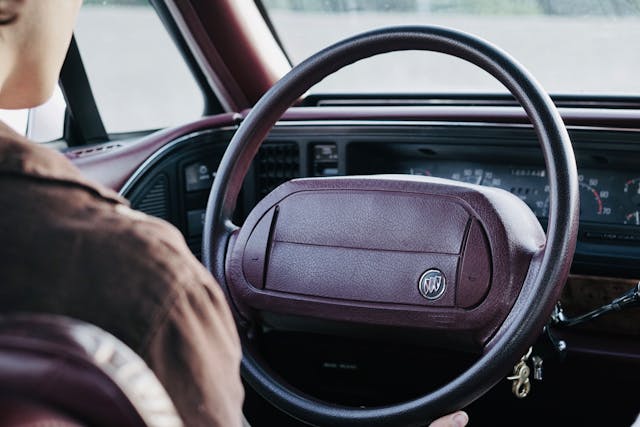The function of headlights, which hold substantial weight in fostering safe and accountable driving habits, particularly under the veil of nightfall or amidst unfavorable visibility conditions such as rain-streaked or fog-infused atmospheres, can be perplexingly overlooked. Their utility extends beyond mere illumination for the individual at the wheel; they also act as nonverbal communicators to fellow road users. The role that headlights play within this intricate ballet of asphalt interaction is manifold—they outline our path ahead, shed light on lurking hazards and form a barrier against collisions.
Yet there exists an unsettlingly high fraction of drivers who appear to dismiss these functions with an alarming nonchalance—or perhaps ignorance—and are witnessed navigating their way through traffic with just one operational headlight. This phenomenon magnetizes specific punitive measures by law enforcement agencies in numerous jurisdictions worldwide; it’s an offence to drive with only one functioning headlight—a testament to its severity.
Such negligence paves the way for potential mishaps—like setting off a chain reaction driven by reduced brightness that narrows down a driver’s viewing field while simultaneously making their vehicle less noticeable to others on the road. A scenario potent enough to induce burstiness—an abrupt surge—in accident rates due to diminished visibility caused by deficient headlights.
The Role of Headlights in Road Safety
The essentiality of headlights, those crucial conduits of visibility on any automobile, can hardly be overstated. They stand as a beacon in the murkiness of nighttime, foggy conditions or inclement weather – their radiant beams scattered across the road to reveal pedestrians, obstacles and other potential perils lurking within the driver’s path. Simultaneously, they communicate vital information to fellow motorists regarding one’s existence on the tarmac – size and precise coordinates included – thereby becoming active players in upholding traffic safety.
However, there are instances where a vehicle traverses with only one headlight illuminating its path – an occurrence not uncommon across various states like Ohio. This situation inevitably leads many drivers into a labyrinth of legal musings such as: Is it unlawful to navigate Ohio roads with just one functional headlight? The answer is rather complex and largely contingent upon specific local and state legislations. Although it wouldn’t win accolades for best safety practices due to obvious hazards involved; from a legal viewpoint implications could range from insignificant to critical depending on circumstantial nuances. A comprehensive understanding about how headlights bolster road safety arms drivers with indispensable knowledge that helps them avoid unnecessary risks while also circumventing any unfavorable encounters with law enforcement authorities.
The Legal Requirements for Vehicle Headlights
In every district, precise legal obligations are tied to the usage of automotive headlamps. These bylaws play a pivotal role in preserving ideal highway safety standards and they’re upheld by corresponding vehicular regulations. For example, it’s typically necessitated under the headlight mandate that all motor vehicles should be equipped with two functioning headlights – situated on both sides of the vehicle’s frontal part. This rule is instrumental in augmenting visibility for drivers during dusk or inclement weather scenarios while concurrently making their vehicle more noticeable to other motorists.
What transpires if you possess only one functional headlight? A frequent query amongst drivers, yet the response isn’t as cut-and-dry as anticipated. Although operating a vehicle with merely one light isn’t wholly illegal, it infringes upon the previously mentioned directive of having two working lights which might invoke penalties. The specific repercussions from violating this regulation differ significantly among jurisdictions but usually entail citation related problems or financial penalties. Moreover, maneuvering a car with just one light could be perceived as an auxiliary factor contributing to road mishaps thereby potentially intensifying driver liability in such situations.
Implications of Driving with a Single Headlight

Navigating the labyrinth of road safety, we find ourselves in a realm where the full functionality of both headlights stands as an undisputed monarch. Imagine, if you will, one headlight surrendering its duty. The resulting twilight would diminish visibility dramatically and place a thick veil over potential hazards on our path forward. It’s not only those behind the wheel of such half-lit vehicles who flirt with danger; other travelers too may misjudge their approach, mistaking them for motorcycles.
How should we respond when faced with this single-eyed beast? Staying true to our unwavering commitment to road safety calls upon us every driver to examine the eyes – or headlights – that light our way before venturing out into nightfall’s embrace. Should one eye flicker and die during your journey through darkness, it becomes paramount to breathe life back into it without delay.
Should this unfortunate event unfurl itself on your path, pull over safely at first recognition of this malady striking your vehicle’s vision. Summon emergency flashers like fireflies in distress and call forth roadside guardians swiftly for immediate aid.
In some cases, employing high beams might serve as temporary salve but let it not lull you into delaying a swift repair. A rapid rally against such circumstances is integral to holding at bay undesirable outcomes on our shared paths under the moonlit sky.
Possible Reasons Behind One Headlight Failure
One’s encounter with the misfortune of a single headlight failure can be traced back to a labyrinth of root causes; often sneaking upon motorists in an unexpected and inconvenient manner. A primary catalyst for this singular malfunction lies in bulbs succumbing to burnout, an inevitable outcome of their natural degradation over time. This occurs as the filament ensnared within gradually weakens before ultimately shattering.
Combine this with unsteady or forceful driving styles or navigating across irregular terrains, and you have potential accelerants that add fuel to the already ignited bulb burnout issue. The ceaseless vibrations and jolts absorbed by the bulb during vehicular motion only add more pressure on its frail structure.
Moreover, lurking beneath are electrical failures threatening to compromise the operational integrity of headlights significantly. These can take form as defective wiring or shattered fuses, which frequently leave one headlight incapacitated while allowing its counterpart to remain functional.
This prompts car owners into querying “Is it legal to drive with one headlight in Ohio?” As such behavior raises considerable safety concerns, different jurisdictions prescribe varied legal requisites along with subsequent penalties accordingly. Therefore, tackling these headlight malfunctions without delay becomes vital — not just for ensuring road safety but also evading unwelcome fines or legal complications.
In addition to the aforementioned, there are several other potential reasons behind one headlight failure. These include:
- Faulty Installation: If a bulb isn’t installed correctly in its socket or if it’s not compatible with your vehicle model, this can lead to premature burnout and subsequent failure.
- Damaged Headlight Lens: A cracked or damaged lens can allow moisture into the headlight assembly, causing electrical components to short circuit and fail.
- Corroded Connectors: Over time, connectors that link the bulb to the vehicle’s electrical system may corrode due to exposure to environmental elements. This corrosion impedes current flow leading to intermittent or total light failure.
- Disrupted Power Supply: Any disruption in power supply from battery could also result in single headlight failure. This might be due an old battery unable provide adequate voltage or faulty alternator not able charge it properly.
Answering common query “Is it legal to drive with one headlight in Ohio?” – It is generally illegal across all states including Ohio as driving with only one functional headlight significantly reduces visibility thereby increasing risk of accidents at night. The penalties for such violations vary by jurisdiction but often include hefty fines and points on driver’s license which could potentially increase insurance premiums too.
Therefore, addressing these issues promptly is crucial both from safety perspective as well avoiding any legal complications down line. Regular maintenance checks along replacing bulbs when needed can help prevent most common causes of single headlight failures ensuring safer drives during low-light conditions.
How Law Enforcement Handles Inadequate Headlight Situations
In the world of law enforcement, there lies a significant emphasis on the matter of deficient headlights. Such an issue is treated with profound gravity as it weaves into the fabric of road safety. Officers find themselves immersed in training to pinpoint vehicles that suffer from malfunctioning or idle headlights, especially during nocturnal patrols or amidst unfavorable meteorological circumstances.
When an officer’s gaze stumbles upon a vehicle exhibiting such deficiencies, they typically orchestrate a traffic stop to confront and remedy the predicament. This action embodies not just their duty to uphold traffic laws but also emerges as an opportunity for them to enlighten drivers about the looming hazards associated with driving under compromised headlight conditions.
The sequence unfolding post-traffic stop can exhibit variability depending on numerous parameters like officer’s judgement and specific state-endorsed traffic regulations. In certain instances, offenders may merely receive verbal advisement stressing immediate rectification of their faulty headlight situation. However, scenarios where repetitive negligence or blatant legal disregard are exhibited by drivers could result in formal citations acknowledging a traffic violation being issued.
One should bear in mind that such violations can trigger off an array of inconvenient repercussions including fines and surges in insurance premiums for drivers. Henceforth, maintaining headlights at peak operational efficiency becomes nothing short of mandatory.
Possible Legal Consequences and Fines
Ignoring the swift mending of burnt-out headlights might trigger consequences far beyond mere dangerous driving scenarios; it could expose the vehicle owner to potential legal ramifications. The provision of functional headlights is a requirement, not just a suggestion, across most jurisdictions worldwide. Driving with only one or none functioning headlights may draw fines and in extreme cases, impose points on the driver’s license. This tarnishing effect on the driver’s record can lead to higher insurance premiums, morphing a minor car repair issue into an enduring financial load.
In several US states, penalties for deficient headlights oscillate between $50 and over $200. This monetary penalty could skyrocket if linked to an accident —a stark testament to how neglecting such a crucial feature of a vehicle can inflate out of control. Yet it’s key to grasp that fines and legal implications differ broadly depending on individual laws within different countries, states or localities. Therefore, drivers must stay updated about their jurisdiction-specific guidelines and obligations so as not unwittingly ensnare themselves in financial or legal traps.
FAQ
The utility of fully operational headlights cannot be understated – they’re pivotal for visibility, permitting drivers to discern and be discerned on thoroughfares, especially during dim light conditions or nocturnal hours. Additionally, they signal your automobile’s locale and trajectory to fellow motorists.
Headlights are indispensable components enhancing vehicular safety as they bathe the route ahead in light, revealing obstructions and traffic signs. Furthermore, they enable other road users to accurately estimate your vehicle’s dimensions, design and velocity.
Legal stipulations fluctuate depending on geographical location; however, it is generally mandated that automobiles should possess two operational headlights. These must be utilized during specific periods (for instance at nightfall or under poor visibility circumstances) and conform to certain brightness levels and color specifications.
Motoring with only one functioning headlight often contravenes legal guidelines while jeopardizing road safety. Law enforcement officers could apprehend you leading potentially to penalties or other juridical repercussions.
A solitary headlight malfunction can attribute its cause from various sources such as a spent bulb, electrical complications, damage incurred from an accident or simply due weariness over time.
The standard procedure involves law enforcement officers stopping vehicles displaying insufficient illumination from their lights followed by issuance of a citation. A deadline may also be set for rectifying the issue along with providing evidence proving correctional measures undertaken.
Precise legal repercussions and fines are subject to regional jurisdiction. However, they typically encompass monetary penalties, accrual of points on your driver’s history or even the necessity for court attendance. Alternatively, you may receive a warning with directions to undertake prompt repair of the faulty headlight.
